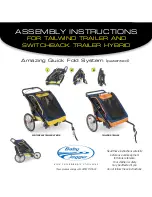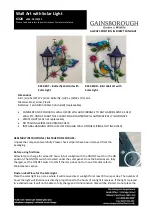
67
9.5.2 No Probe Hit
If the buried subject cannot be found by the probe,
place the probe approx. 1 meter above the point
with the lowest distance indication. While digging,
enough space is now made available to allow a fur-
ther fine and pinpoint search within the excavation
site.
For further information concerning the search and
excavation of deep burials, please consult in publi-
cations on “Fine Search in a Circle”.
66
C O M PA N I O N R E S C U E
9.5 Pinpointing with
Transceiver and Probe Pole
Pinpointing the location of a buried subject is not
possible with a transceiver alone. The burial depth
and the orientation of the subject can be deter-
mined easily and quickly with a probe pole. Use the
shovel to mark the point with the lowest distance
reading or loudest tone as a visual reference for the
probing spiral. Always probe at a right angle to the
snow surface.
If the buried subject is hit with the probe pole, the
pole is left in the snow. It serves as a guide while
excavating the buried subject.
The burial depth is also a triage criterion. In situa-
tions with limited resources deep burials are locat-
ed later.
9.5.1 Multiple Rescuers in the
Fine- and Pinpoint Search
If several rescuers are present while you are in the
fine or pinpoint search phase, place a probe 1
meter below the expected burial location. Now, you
have the required space to conclude the fine and
pinpoint search while the remaining rescuers
already start with the excavation of the buried sub-
ject. When you have confirmed the find with a probe
hit, remove the pilot probe so that the V-shaped
snow conveyor belt can be extended.





































